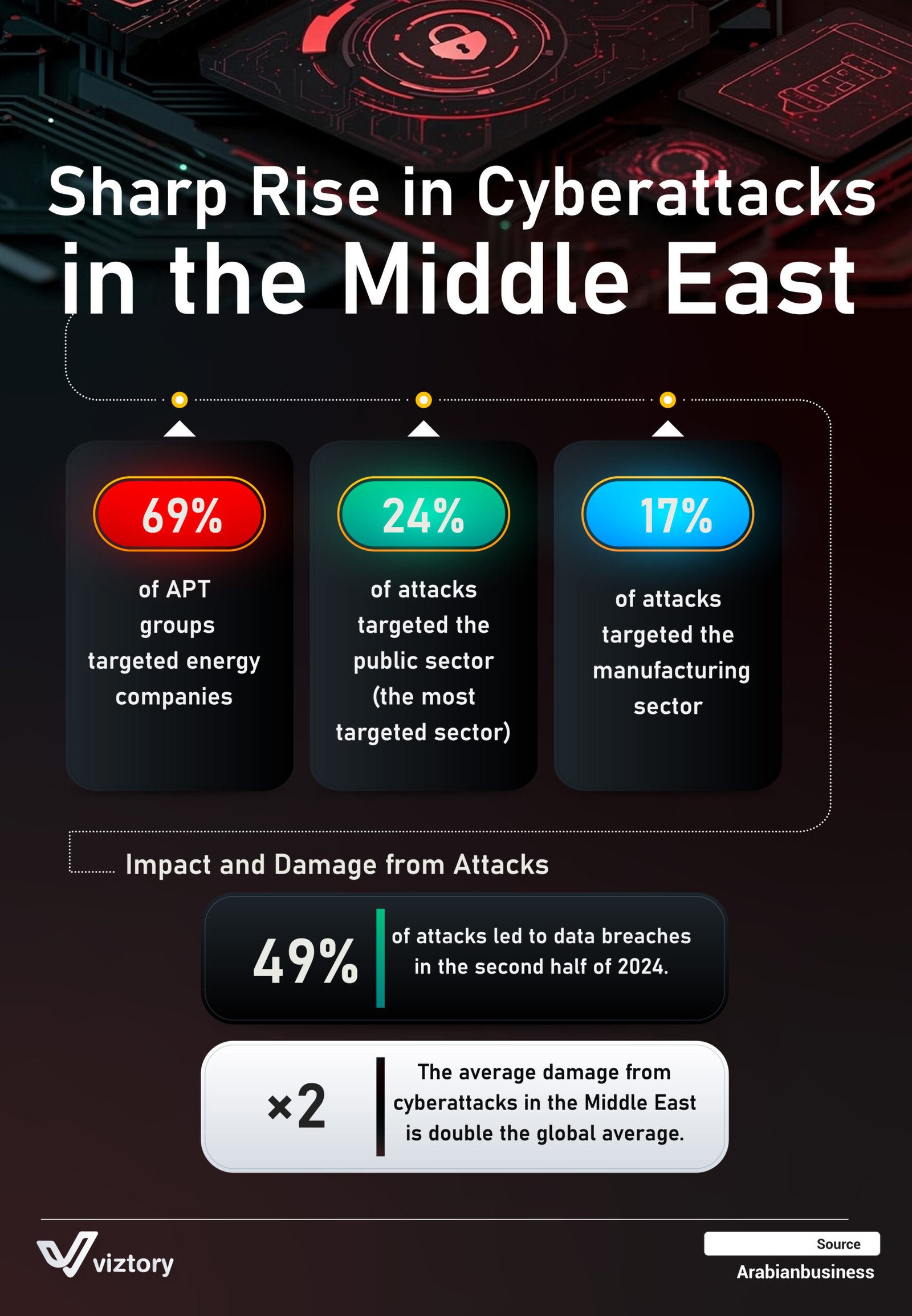Sharp Rise in Cyberattacks in the Middle East: A Growing Concern
-
Nov, Sun, 2024
The Middle East has experienced a dramatic increase in cyberattacks in recent years, highlighting the region’s vulnerability in the digital age. As economic and political importance grows, so does the interest of Advanced Persistent Threat (APT) groups and hackers targeting critical infrastructure, public institutions, and industries. This rise in cyber threats has significant implications for the region’s security, economy, and technological resilience.
Cyberattacks by Sector
Energy Sector: 69% of APT Groups Targeted Energy Companies The energy sector remains the most targeted in the Middle East, with 69% of APT group attacks focusing on energy companies. This is not surprising given the region’s global importance as a hub for oil and gas production. Disruptions in this sector could have far-reaching economic consequences, both regionally and internationally.
Public Sector: 24% of Attacks The public sector is also a key target, with 24% of attacks aimed at government institutions. These attacks often seek to steal sensitive data, disrupt services, or damage critical infrastructure. The focus on the public sector underscores the need for governments in the region to strengthen cybersecurity measures.
Manufacturing Sector: 17% of Attacks Manufacturing industries, which are increasingly adopting digital technologies and automation, accounted for 17% of cyberattacks. As the region diversifies its economies through industrial development, these attacks pose a serious risk to growth and innovation.
Impact and Damages from Cyberattacks
Data Breaches in the Second Half of 2024 Nearly 49% of cyberattacks in the Middle East resulted in data breaches during the latter half of 2024. This indicates a worrying trend of cybercriminals successfully compromising sensitive information, which can lead to financial losses, reputational damage, and national security risks.
Double the Global Average Damage The average damage caused by cyberattacks in the Middle East is reported to be twice the global average. This elevated cost underscores the urgent need for enhanced cybersecurity frameworks and investment in advanced defensive technologies.
Cybersecurity Challenges in the Middle East
Several factors contribute to the rise of cyber threats in the Middle East:
- Geopolitical Tensions: Ongoing conflicts and geopolitical instability make the region a hotbed for state-sponsored cyber espionage and sabotage.
- Economic Importance: As a global hub for energy, trade, and finance, the Middle East is a prime target for cybercriminals seeking to disrupt operations or gain financial benefits.
- Rapid Digital Transformation: The region’s push towards digitization in industries such as finance, healthcare, and education has outpaced the implementation of robust cybersecurity measures.
Building Cyber Resilience
To address these challenges, Middle Eastern governments and organizations need to adopt proactive strategies:
- Investment in Cybersecurity Infrastructure: Allocating more resources to advanced cybersecurity technologies and skilled professionals is crucial.
- Regional Cooperation: Collaborative efforts among countries in the Middle East can help share intelligence and respond more effectively to cyber threats.
- Public Awareness Campaigns: Educating individuals and businesses about best practices in cybersecurity can reduce vulnerabilities.
- Private Sector Partnerships: Engaging with global tech leaders to implement cutting-edge solutions can bolster the region’s defenses against sophisticated attacks.
Conclusion
The sharp rise in cyberattacks in the Middle East serves as a wake-up call for governments, businesses, and individuals. While the region continues to embrace digital transformation and innovation, strengthening cybersecurity must remain a top priority. By investing in robust defensive measures and fostering collaboration, the Middle East can safeguard its critical assets and pave the way for a secure digital future.

